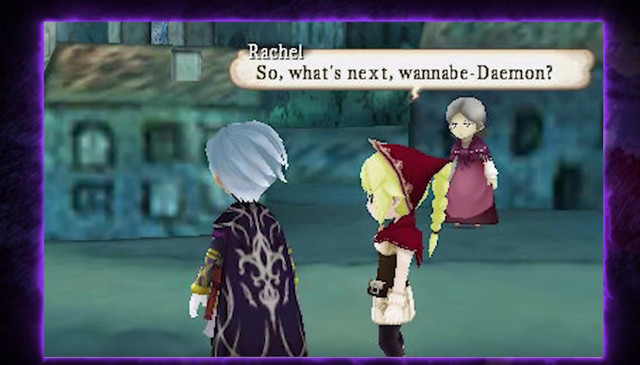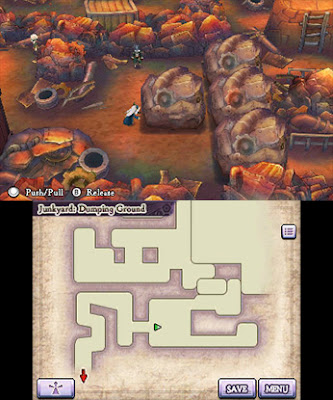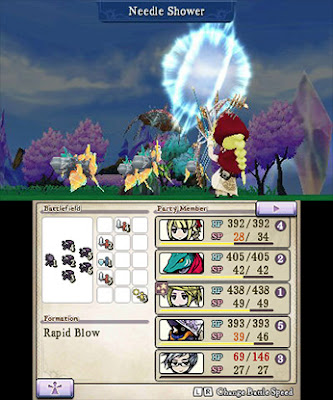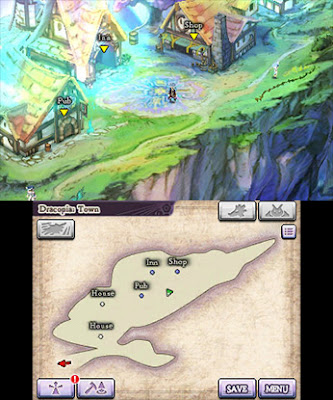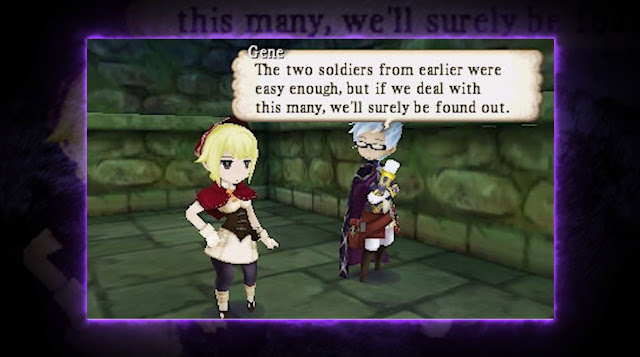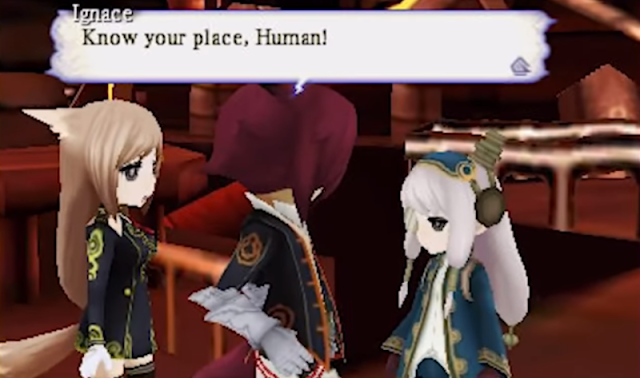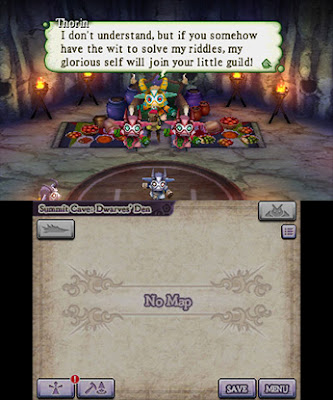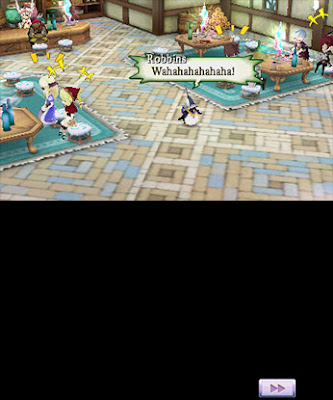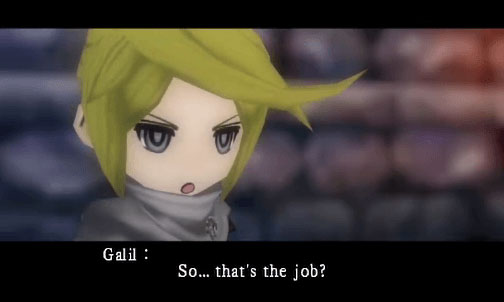Review by Clark A.
That impression shifts as players are plunked into the perspectives of Azura and Galil, two human youths grappling with the aftermath of their race’s subjugation generations later. Azura dreams of a world free from endless rainfall while Galil ponders her words in a more cynical light, giving viewers some insight into their characters. Even if you couldn’t read a lick of dialogue, though, the world’s somber colouring and music juxtaposed against the game’s own cutesy art style is enough to evoke passion. This gloom only escalates as the Beastfolk stance towards humans becomes clear. However, Azura and Galil’s father (biological and adoptive respectively) runs a hidden resistance force from within their Beastfolk-ruled human village, so all hope is not lost.
As an aside, The Alliance Alive uses its townsfolk to marvelous effect during all these establishing scenes. Some JRPGs are content using extraneous dialogue to dump combat tips or have wandering characters spout amusing rubbish. Here, the world’s political structure and power hierarchy is constantly conveyed through the speech and mannerisms of the commoners. Conversations are tailored toward the race of the character you’re controlling. Take control of the ruling Daemons and you’ll witness anything from petrified groveling or awestruck denial of your existence. Guide a human and you’re more likely to hear cautious advice from their kinsmen or smug gloating from their Beastfolk overlords. You’ll still get those gameplay hints and wacky conversations, but they’re sandwiched between well-integrated world-building that drives home the game’s central themes. There’s a sharp sense of the world’s pervasive fear and inequality.
There are criticisms to be made of the plot, particularly how a couple threads that are established early go woefully unused later. As a consequence, their potential thematic influence is undermined and the characters to which these elements pertain don’t branch out as much as they could have.
The battle system takes this to heart by being streamlined but complex. It’s reminiscent of the SaGa games and The Legend of Legacy, but in many ways is its own animal. Your objective when fighting is not the acquisition of experience points. In The Alliance Alive, leveling up does not increase your physical prowess besides boosting your health points ever so slightly. Rather, the idea is to acquire talent points, a currency used for building and customising characters according to your play style. You can increase how many skill points (used for executing special attacks) you regenerate, make it tougher for enemies to see you outside battle, lower the cost of weapons in shops, or enhance the rate at which you learn new skills with a specific weapon. The options are multifaceted and interesting, so you’ll find yourself experimenting right in the game’s earliest chapters.
As a whole, the game goes for an “all killer, no filler” approach with very little in the way of handholding. The mechanics are intricate but straightforward enough to intuit without tutorials marring the story’s pace or your freedom to explore. By the very first dungeon, the developers trust players enough to pick between tackling the game’s plot head-on and biting off more than they can chew with optional, tougher scenarios that provide long-term rewards.
– Clark A.
Anime Editor



